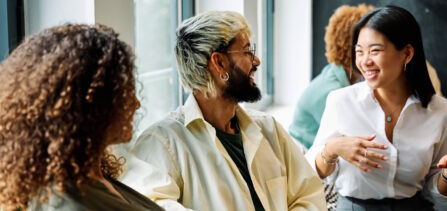
Active Listening Communication Skills 101
Most people don’t listen in order to understand. They listen in order to reply!
Active Listening is a Fundamental Communication Skill
I could probably write a blog a day on Communication and never ever run dry of things to write about. It’s such a complex part of our lives that can enhance or devastate in the blink of an eye.
One of those aphorisms making the internet rounds is something along the lines of
“Most people don’t listen in order to understand. They listen in order to reply.”
Even if I’ve got the wording slightly wrong, it’s still a powerful statement and one, alas, that’s all too true.
Most of us aren’t very good with what is known as active listening.
Leaping in as soon as the other person has stopped speaking, or even interrupting in order to put your oar in doesn’t necessarily create empathy or rapport. It can be experienced as either rude or that you are someone who thinks that what you have to say is more important than what they have to say.
Oh I know, I know, when you’re with your mates or family it’s common for conversations to overlap, for people to talk over one another, to interrupt and turn up the volume. I’m not necessarily talking about those situations.
I’m talking about times when it really is important to slow everything down by actively listening to what the other person has to say and then considering it before you break all records to get yourself heard.
Active Listening
That’s the first step of active listening – letting the other person finish what they have to say.
Actually, there’s a step before that which is to let them speak in the first place.
The second step is to then take time to reflect on what they’ve said before you respond at the same time as letting them know you genuinely are interested.
We think of doing this in three ways
Non-verbal
Which is simple listening behaviour of nods and smiles of encouragement and good eye-contact
Semi-verbal
Which is saying things like uh huh and mmm
Verbal
Which is using phrases such as “That sounds interesting, tell me more” or asking open questions to elicit more information.
Another aspect of active listening is to avoid interpreting what the other person has said and one way to achieve that is to reflect back what you’ve just heard rather than tell them what you think they mean and adding your opinion on top of what you think they mean.
Active Listening
Active listening is a key cornerstone of communication. And as well as encouraging the other person to open up, it shows that you care about what they have to say. This in turn can lead to a proper dialogue even when the conversation might be tricky or difficult.
We think this is particularly useful when you are having a conversation with someone you don’t get on with particularly well or for whom you don’t feel too much empathy.
As a matter of fact, I’ll give you a little challenge. The very next time you have to talk to someone you don’t like all that much or who rubs you up the wrong way or who you find problematic, turn on that switch inside your head that says active listening and see if anything different happens. Make it a conscious choice rather than getting into the same communication patterns you’ve always followed.
Practising Active Listening really can make a big impact on communication. You might even want to try it with your mates and family during one of those communication free-for-alls.
Check out Impact Factory’s
One and Two-Day Communication Skills Courses
and our
Elite Five Day Immersive Communicate with Impact Course
Active Listening
By Jo Ellen Grzyb, Director, Impact Factory




